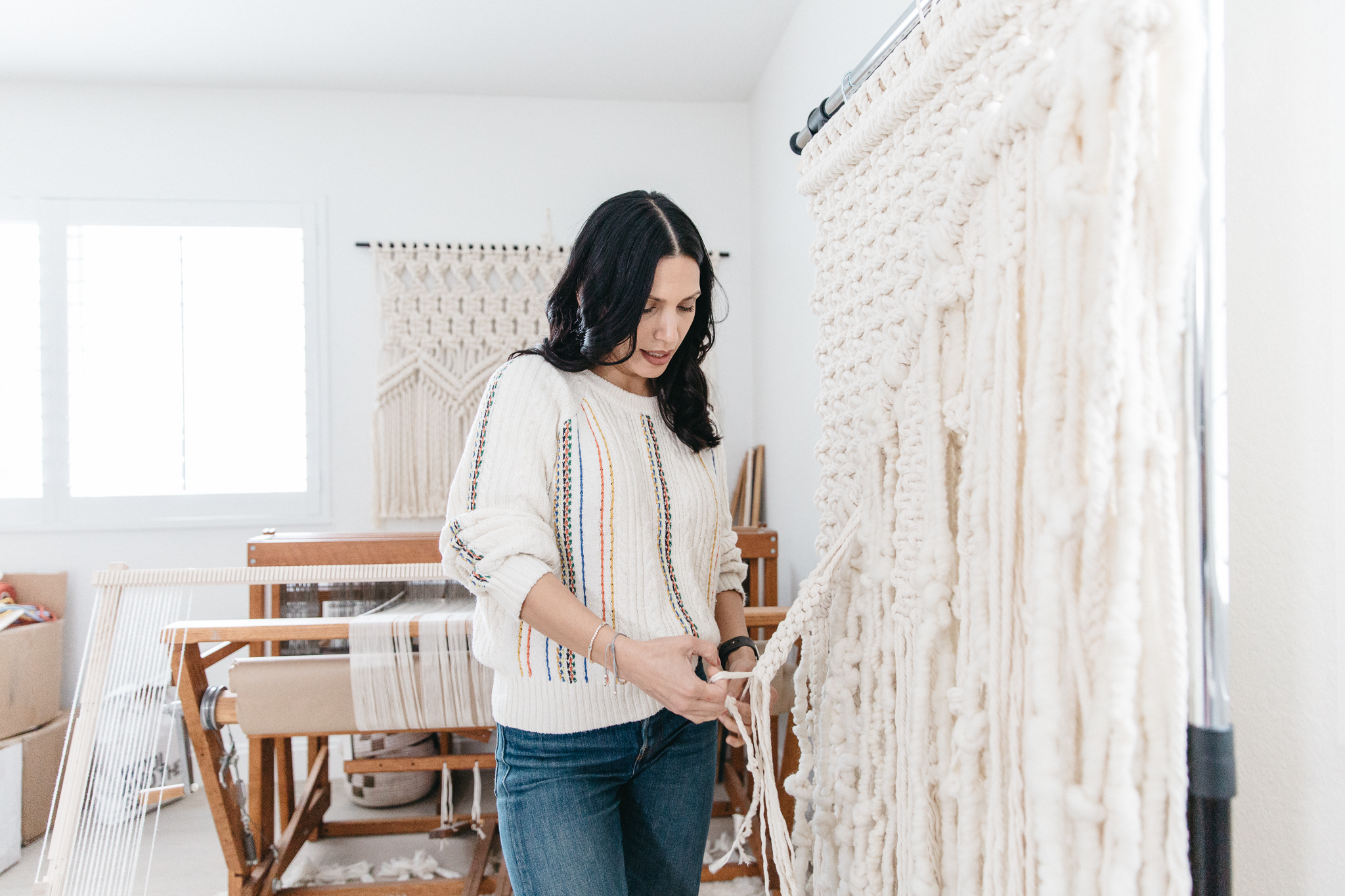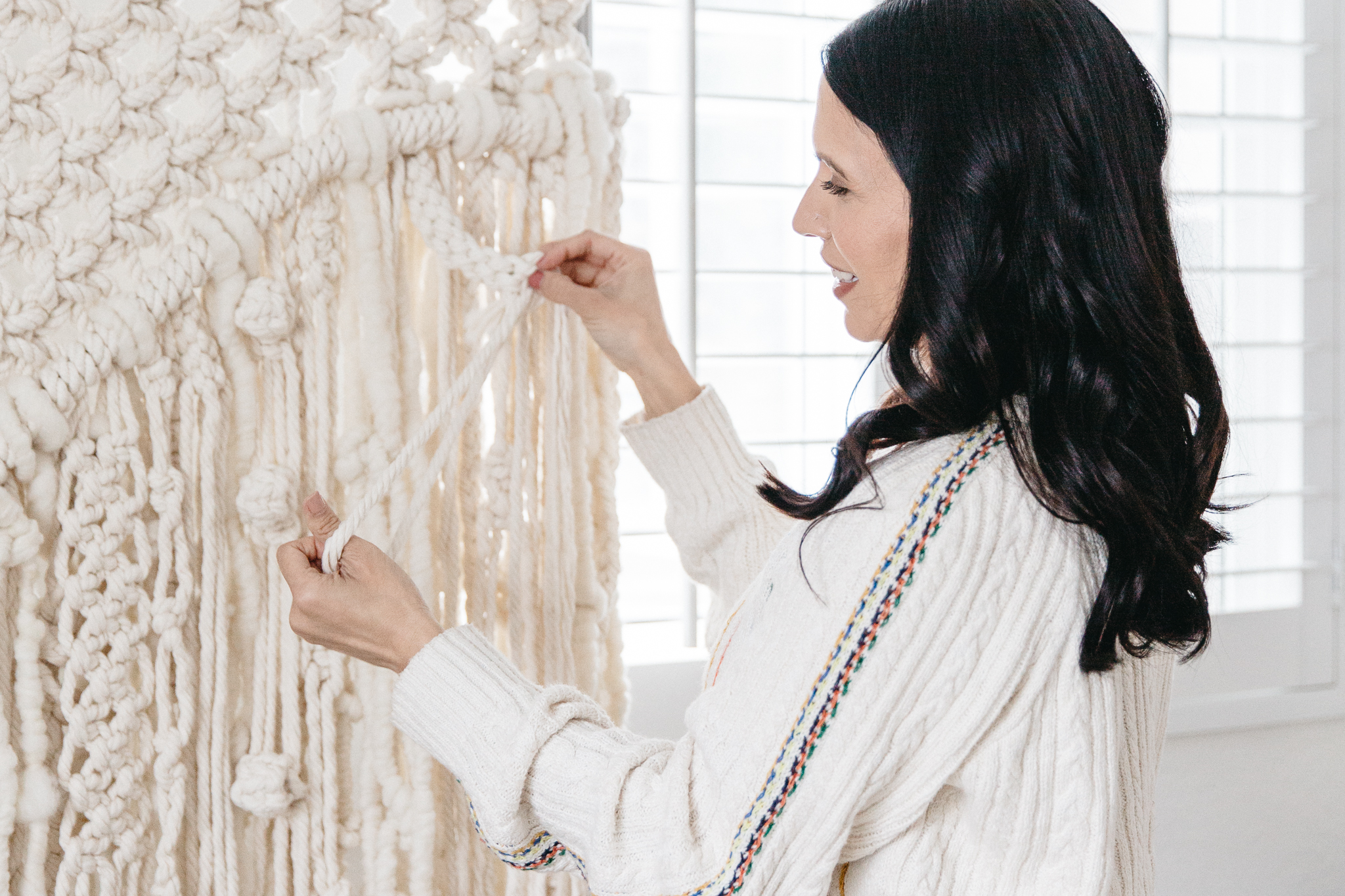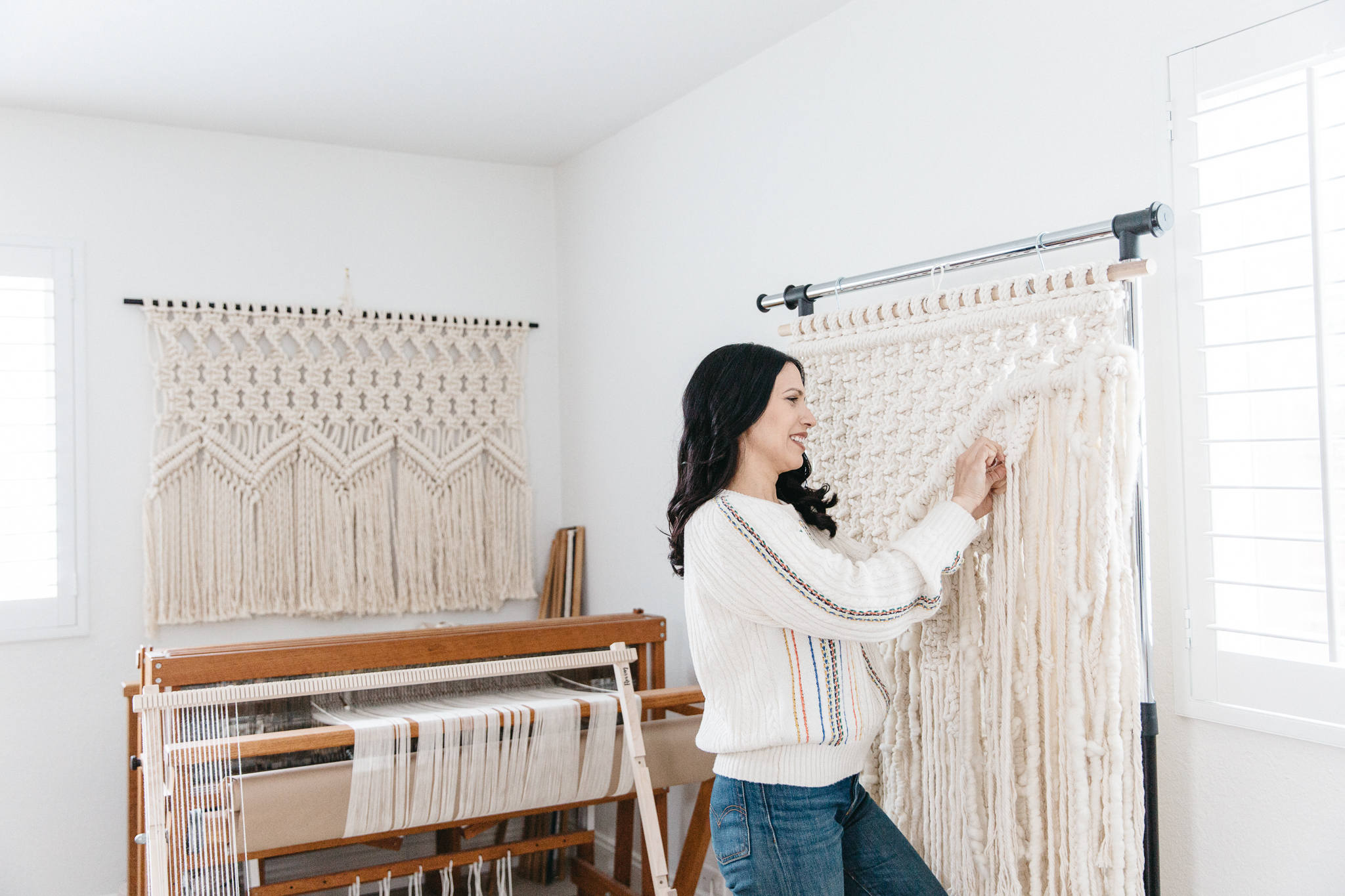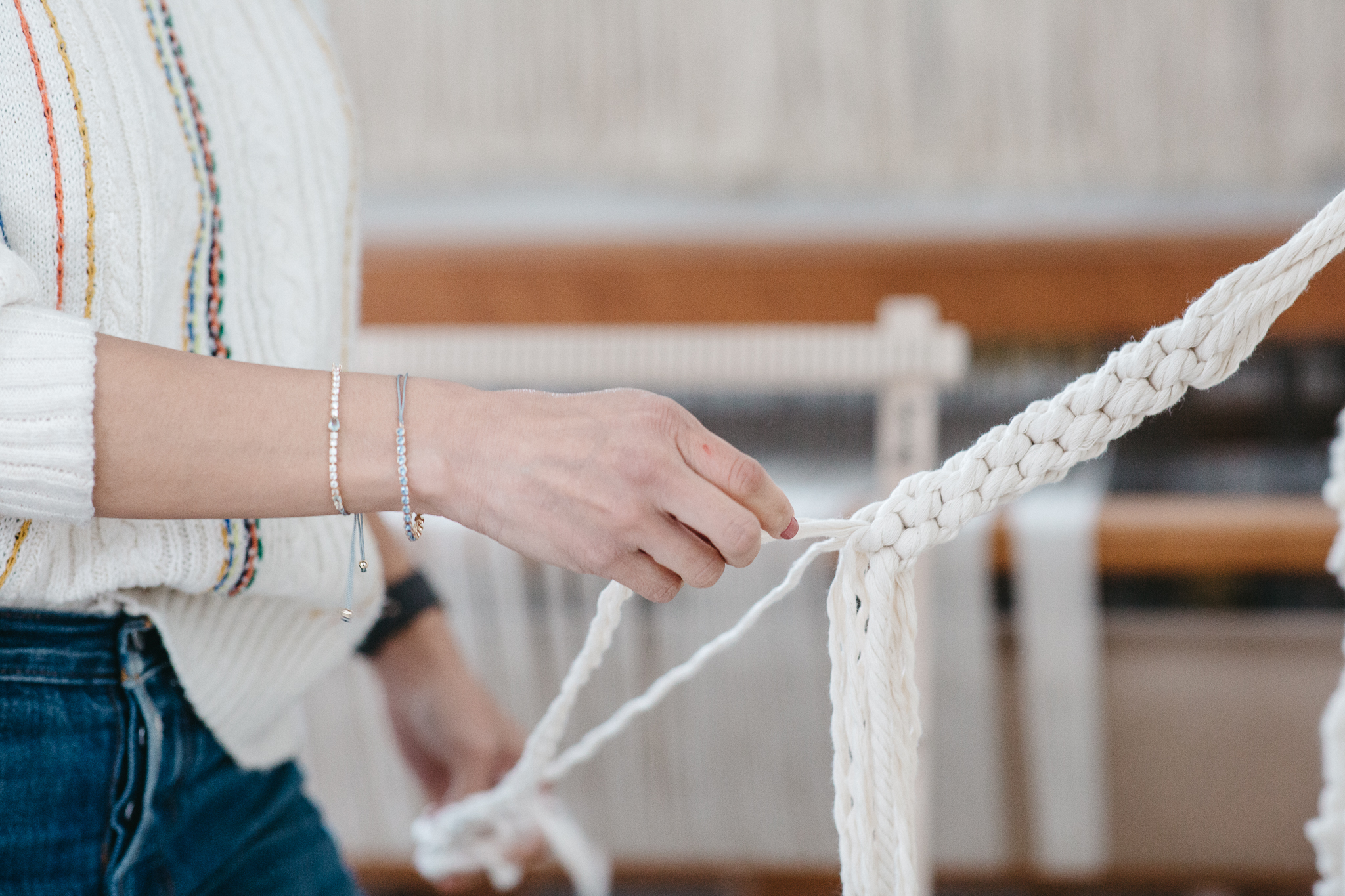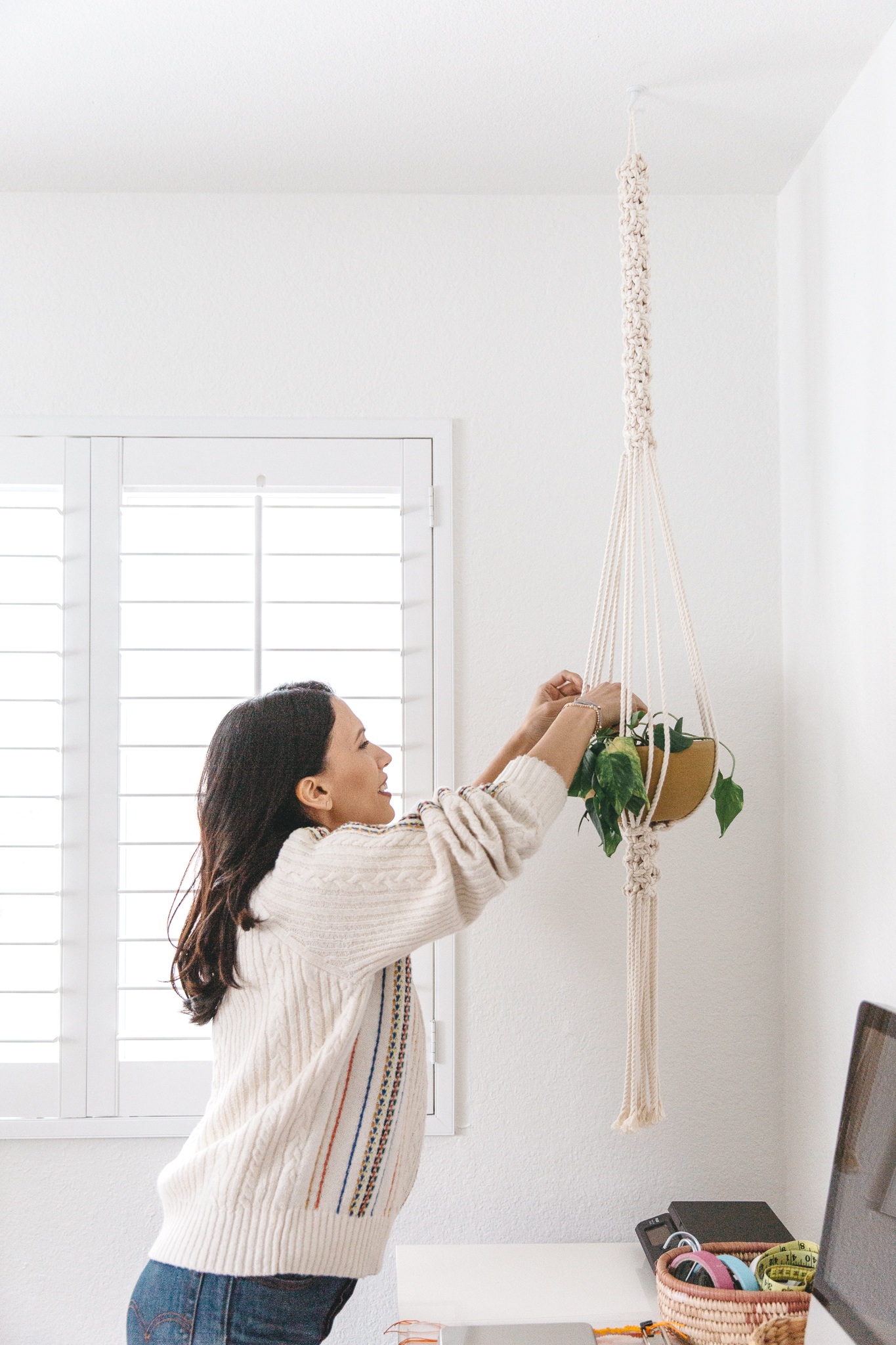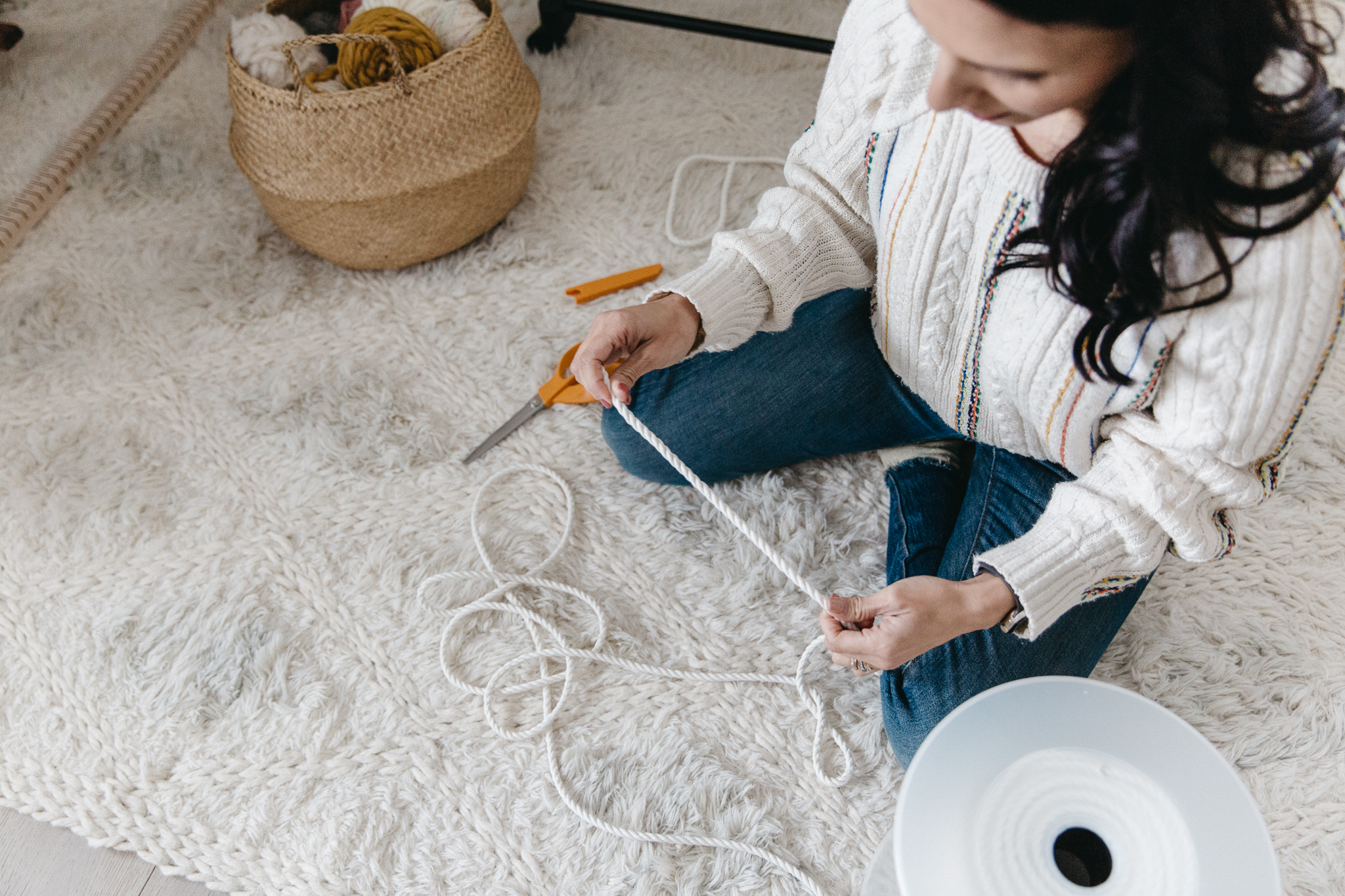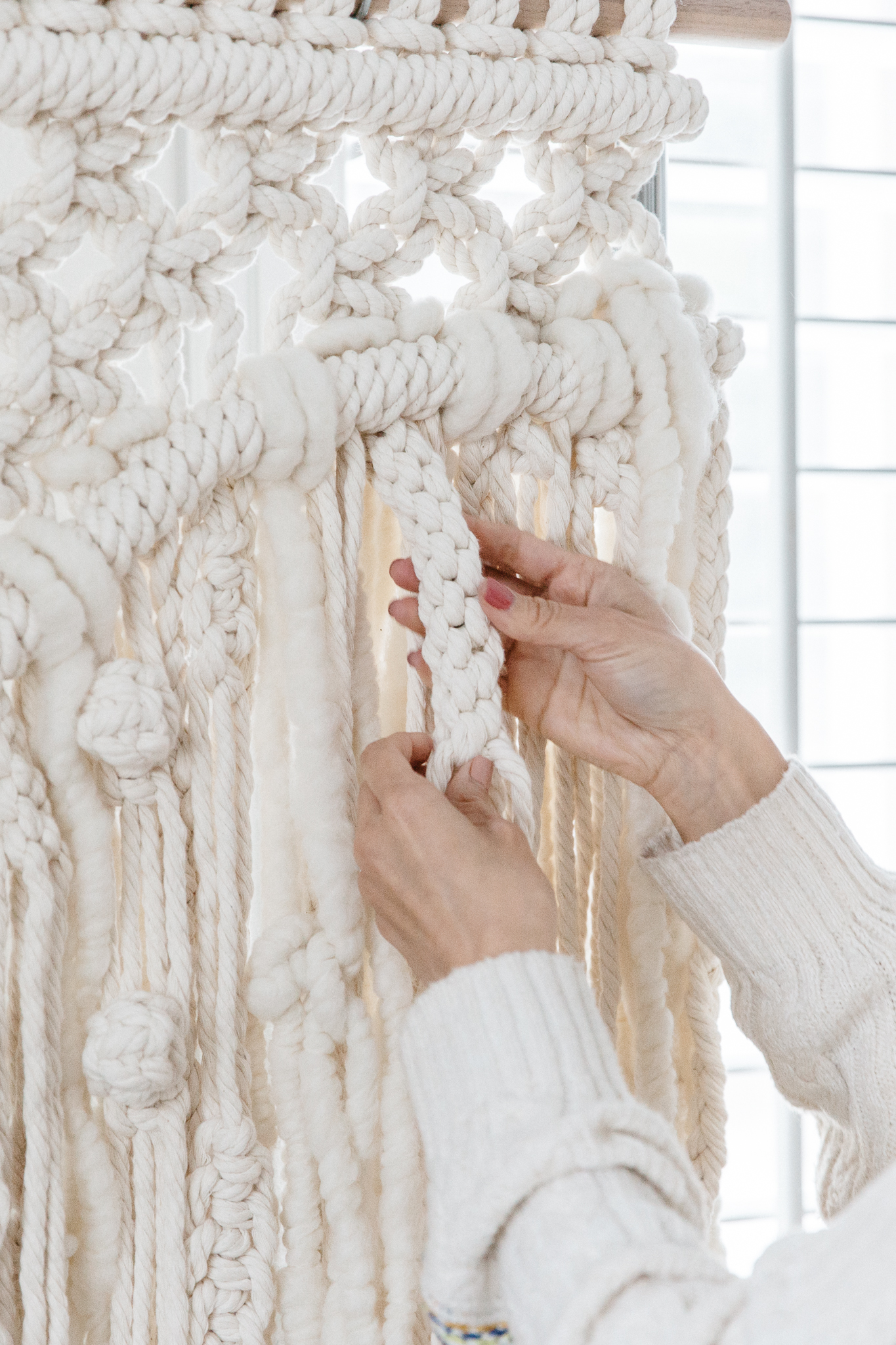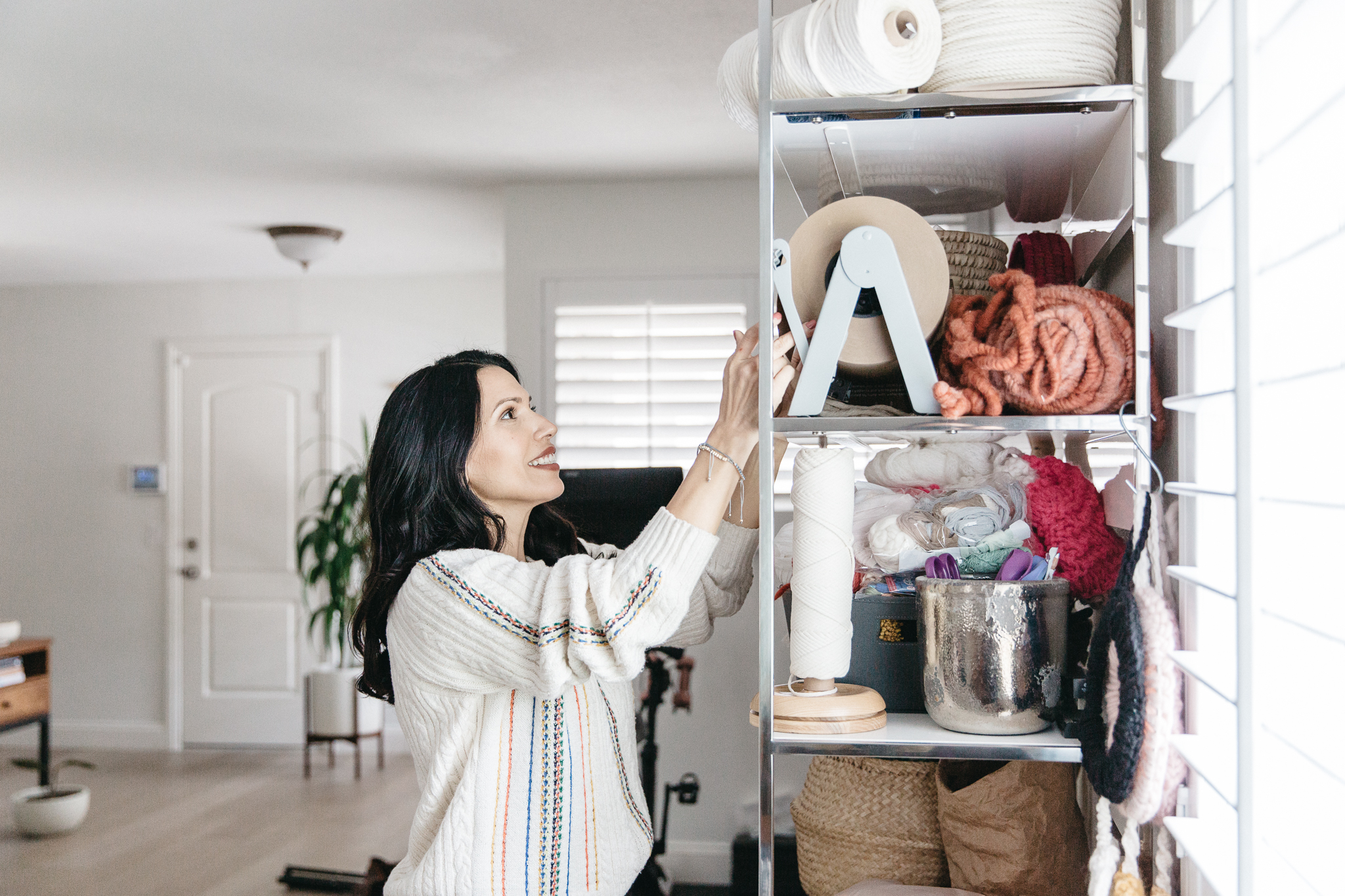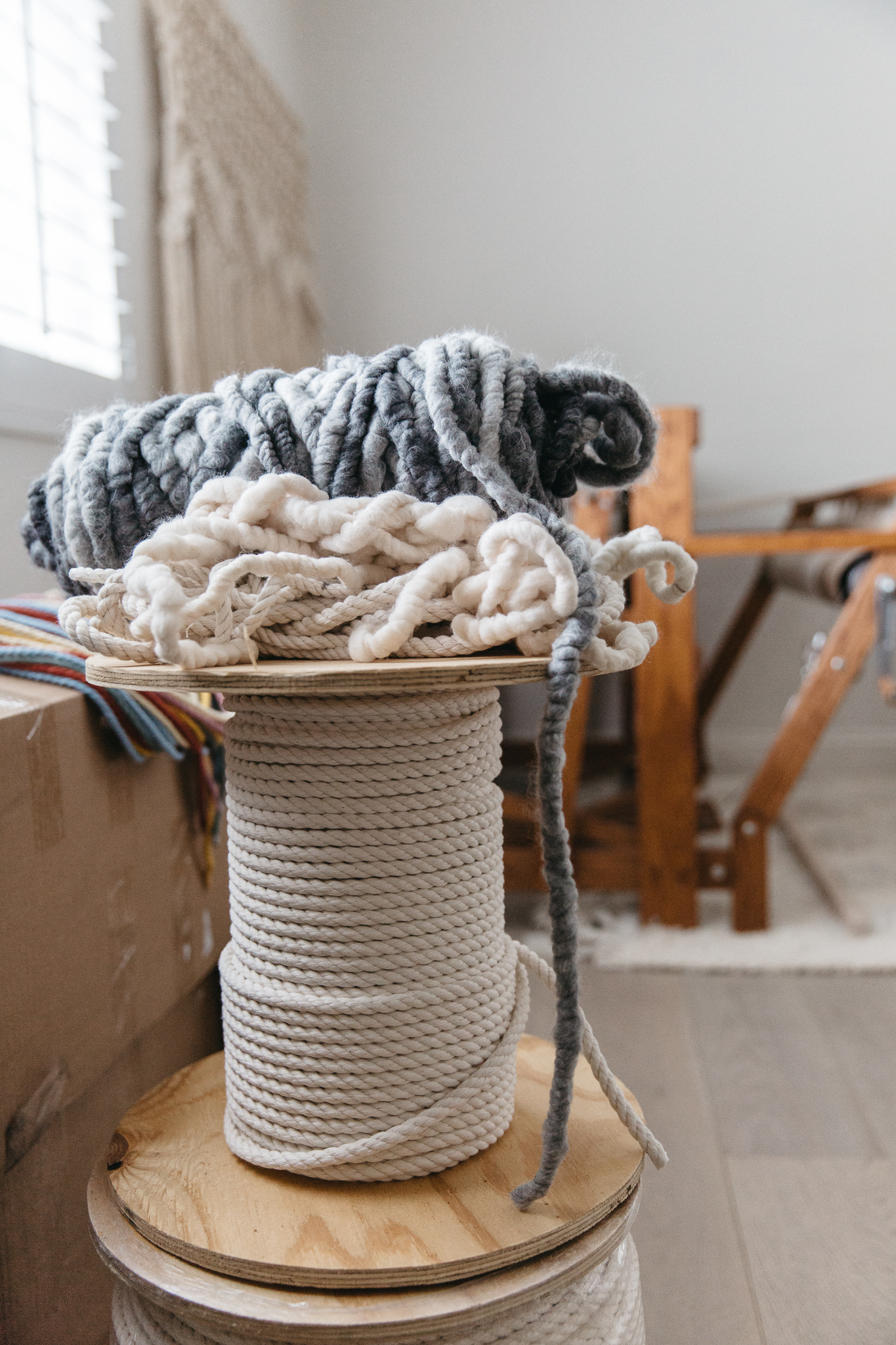Who knew that rope-tying could be such a beautiful art form? I didn’t, until a few years ago when I discovered modern macramé - a form of textile, or fiber art, where you create patterns by tying cords together.
Elsie Goodwin of Reform Fibers decided to be a Stay at Home Mom when she had her first daughter six years ago. She was looking for a way to keep her hands and mind busy. Two years into motherhood, she discovered macramé and taught herself the craft from YouTube videos.
The Beginning
“What I loved about macramé was that unlike knitting and crocheting, the rope is thick, so the projects come into form much faster. So I was able to do substantial projects during nap time or before they were awake in the morning.
What’s cool about macramé is that you can tie a knot and untie it. It’s very therapeutic for me just going through the process and figuring it out. I think that it is like a moving meditation - it’s repetitive, but there’s a purpose for each act for the larger picture. If it doesn’t come out the way you want, you take out the knot and do it again. I enjoy the process of that and don’t look for perfection.”
Entrepreneurial Spirit
“I had experience recognizing and reading patterns because of my experience with knitting and crocheting for almost 20 years before I picked up macramé. I realized that there were not many modern patterns out at the time. You saw a lot of the vintage pieces, but there weren’t a lot of patterns out there that would go with modern homes. I saw it as an opportunity to write my own patterns.
The majority of my business stems from creating and selling beginner to intermediate DIY patterns on Etsy. I love teaching and connecting with those makers, who want to keep their hands busy like I did. I also get commissioned to make custom pieces. That’s where I get to be really creative in making a piece. I also do workshops, house parties and team building events.”
Finding a Style
“Initially, I tried to use everything - rope and yarn, crocheting within macramé… hand-dyeing yarn, (which was really time consuming) etc. And I even did some weaving and took a weaving class for a year. I love the art form, but I quickly realized that I have too many ideas and not enough time. By the way, the floor loom in my studio is for weaving. Macramé doesn’t require extensive equipment. So I realized I need to focus on the things that are most fulfilling for me and that is macramé. So now, I am more attracted to clean looks lop and the natural colors of the rope and I don’t hand dye them anymore.
I have a background in the fashion industry as a buyer for retail stores. A skill you learn when you’re buying and working with brands and collections and seasons and trends is learning to edit. Knowing when enough is enough and allowing the piece to be the piece and not everything I see other artists and I myself have imagined it to be. Maybe it can be this or maybe it can be that. But sometimes you just have to say, ‘Let the wall hanging be the wall hanging.’ It’s a lesson I’ve learned to pull back and edit.”
The Beauty of Crafting by Hand
“There is more work that goes into preparing to make a piece than people typically assume. Sometimes, when people look at a piece at a craft show or market, they may say to themselves, ‘Oh, I can do that. No need to spend money on it because I can do it.’ But I think people underestimate all that goes into it: thinking about the piece you’re going to make, how much rope to need, how to cut the rope appropriately, how to set the piece…. You see a lot more mass produced fiber art these days and that’s fine if that’s what you’re drawn to. But I enjoying gifting and giving to people who appreciate the care and time that goes into making a piece by hand.”






